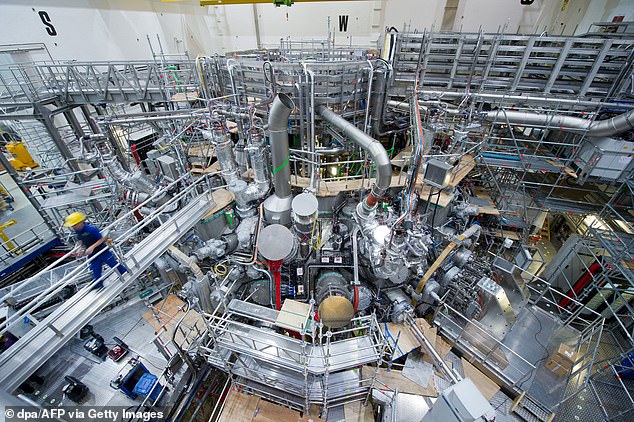
German Fusion Reactor Hits 43-Second Milestone in Step Toward Limitless Clean Energy
German Fusion Reactor Sets New World Record in Clean Energy Quest
At the sun’s core, nuclear fusion produces immense energy by merging hydrogen nuclei. Replicating this process on Earth could unlock limitless clean power. Scientists at Germany’s Wendelstein 7-X stellarator have taken a leap forward, setting a world record for sustained fusion plasma, lasting 43 seconds at extreme temperatures—a critical milestone in the race for practical fusion energy.
The Stellarator Breakthrough
The €1.6 billion Wendelstein 7-X, operational since 2015, is the largest stellarator reactor. This pretzel-shaped device uses intricate magnetic coils to confine hydrogen plasma at temperatures exceeding 20 million °C. In its latest experiment, it achieved a record "triple product"—a key fusion metric combining plasma density, temperature, and confinement time. Surpassing previous tokamak records (like the UK’s JET and Japan’s JT60U), this result proves stellarators’ potential for stable, long-term fusion.
[Image placeholder: Wendelstein 7-X fusion device, highlighting its helical design.]
Caption: The Wendelstein 7-X stellarator uses twisted magnetic fields to trap plasma, enabling sustained fusion reactions.
Why the Triple Product Matters
The triple product determines whether fusion generates more energy than it consumes. Wendelstein 7-X’s success brings scientists closer to breaching this threshold. During the experiment, 90 frozen hydrogen pellets were injected into the plasma, sustaining reactions while microwaves heated it to 30 million °C. Researchers note that sustaining plasma for 30+ seconds allows observation of physics relevant to continuous operation—a stepping stone to "infinite" energy production.
[Image placeholder: Plasma inside the reactor, glowing under intense heat.]
Caption: Plasma in Wendelstein 7-X reached 30 million °C, demonstrating stellarators’ capacity for high-performance fusion.
Stellarators vs. Tokamaks
While most fusion research uses tokamaks (doughnut-shaped reactors relying on internal currents), stellarators avoid current-induced instabilities through complex 3D magnetic fields. Though harder to build, they’re easier to control long-term. Thomas Klinger of the Max Planck Institute hailed the achievement: “Elevating the triple product to tokamak levels marks a milestone toward a power-plant-capable stellarator.”
[Image placeholder: Diagram comparing stellarator and tokamak magnetic fields.]
Caption: Stellarators use external coils (left) for stable plasma confinement, unlike tokamaks (right), which rely on internal currents.
The Road Ahead
Fusion promises near-limitless energy from abundant hydrogen, producing only helium as waste—unlike fission reactors, which generate radioactive byproducts. With upgrades, Wendelstein 7-X aims for 30-minute pulses by 2025. If scaled, this technology could revolutionize energy grids, offering a safe, carbon-free alternative to fossil fuels.
[Image placeholder: Scientist monitoring controls at the Greifswald facility.]
Caption: Researchers at the Max Planck Institute aim to extend plasma duration to minutes, nearing energy breakeven.
In Short: Germany’s Wendelstein 7-X stellarator has set a fusion endurance record, proving its design’s viability. While challenges remain, this breakthrough energizes the global quest for clean, limitless power.


